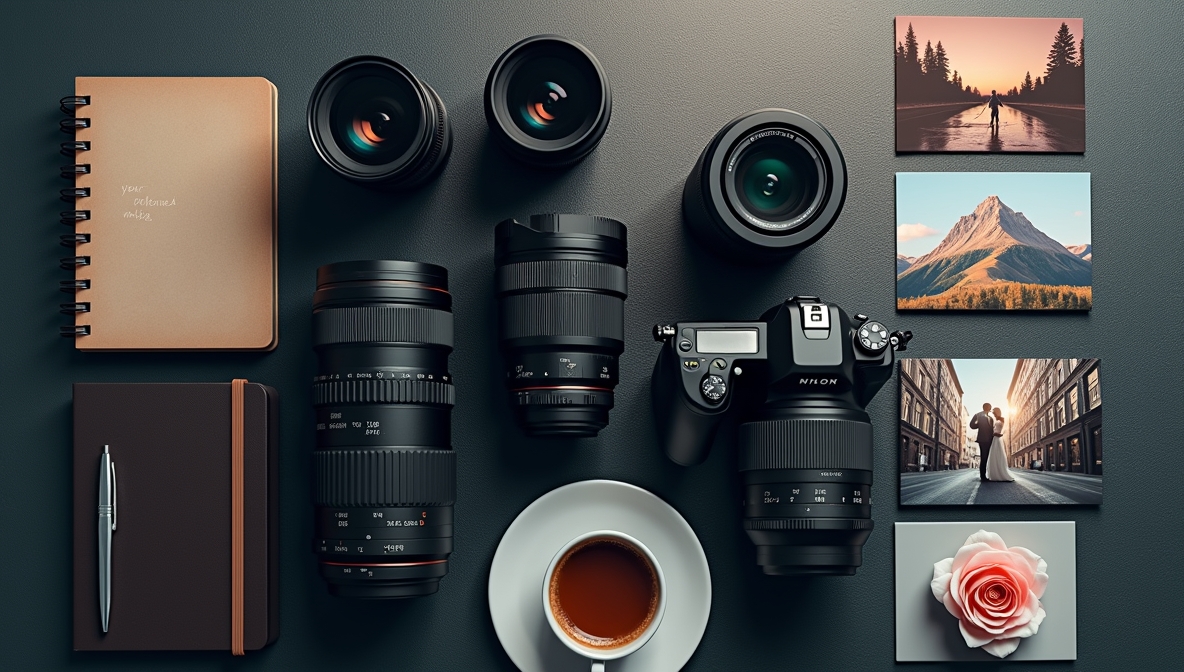Best Photography Lenses in 2025
A Comprehensive Guide for Every Photographer

Whether you're a beginner capturing your first portrait or a seasoned pro aiming for cinematic wedding shots, choosing the right lens is critical. In this SEO-optimized guide, we’ll break down the best photography lenses of 2025 across categories—from portraits to landscapes—while also connecting it to your photographic journey, including ways to monetize your work, restore old masterpieces, and explore creative styles.
Why Your Lens Choice Matters
Your camera lens determines how your subject is captured, how much light enters the frame, and the overall emotional impact of your image. Unlike camera bodies that evolve quickly, a good lens can serve you for decades. Pairing the right lens with creative skills—like artistic double exposure photography (learn how here)—or cinematic compositions (wedding photo tips here) can elevate your photography from average to exceptional.
A professional-grade lens improves sharpness, reduces distortions, and gives better control over depth of field. This control is essential for storytelling, whether you’re capturing stunning wedding portraits or creating composite art.
Best Lenses by Photography Style
1. Best Lens for Portrait Photography: Canon RF 85mm f/1.2L USM
- Why it’s great: Stunning bokeh and sharp subject focus, thanks to its ultra-wide aperture.
- Perfect for: Wedding portraits, fashion, and editorial work.
- Bonus: Ideal for cinematic wedding photography where emotional clarity is essential.
- Additional Insight: As featured in guides on cinematic photography, this lens helps isolate the subject while beautifully blurring the background, giving your photos a timeless and professional aesthetic.
2. Best Lens for Landscape Photography: Nikon Z 14-24mm f/2.8 S
- Why it’s great: Ultra-wide angle, exceptional edge-to-edge sharpness even at wide apertures.
- Perfect for: Travel photography, expansive cityscapes, and nature lovers looking to capture dramatic skies and mountain ranges.
- Bonus Tip: A great lens if you’re planning to sell travel or nature photos on stock websites like those mentioned in this guide.
- Additional Insight: Weather-sealed and rugged, this lens suits adventurous photographers looking to monetize scenic content (how to sell your photos online).
3. Best Lens for Beginners: Sony FE 50mm f/1.8
- Why it’s great: Affordable, compact, and delivers beautiful image quality.
- Perfect for: Everyday photos, portraits, street scenes, and exploring depth of field.
- As featured in: Beginner gear guides like this one.
- Additional Insight: Often dubbed the "nifty fifty," this lens offers pro-quality results without overwhelming complexity, making it an ideal companion for first-time DSLR and mirrorless users.
4. Best Lens for Street Photography: Fujifilm XF 35mm f/2 R WR
- Why it’s great: Compact, discreet design with quick autofocus and weather-sealed construction.
- Perfect for: Capturing fleeting moments, travel documentation, and storytelling.
- Additional Insight: Its focal length mimics natural vision, making it a go-to choice for candid scenes and everyday street vignettes that feel alive and intimate.
5. Best Lens for Macro Photography: Sigma 105mm f/2.8 DG DN Macro Art
- Why it’s great: 1:1 magnification, precise autofocus, and optical image stabilization.
- Perfect for: Close-up shots of flowers, insects, food, and detailed product photography.
- Great match for: Restoring and preserving tiny details in vintage photo restoration (explore tools).
- Additional Insight: Perfect for photographers who create high-detail art prints or sell macro images as digital downloads on platforms like Etsy.

Zoom vs Prime Lenses: What to Know
- Zoom Lens: Offers variable focal lengths (e.g., 24-70mm), excellent for travel, events, or unpredictable environments.
- Prime Lens: Fixed focal length (e.g., 50mm), often sharper and better in low light, with a more artistic and intentional feel.
Understanding the zoom vs. prime debate is crucial. While zooms provide flexibility, primes challenge you to think and compose more deliberately—a key practice if you’re experimenting with unique styles like double exposure or fine art.
Pro Tips for Choosing the Right Lens
- Match your lens to your goals: Selling fine art online? Go for high-resolution primes. Shooting events? Invest in fast zooms.
- Think ahead: Choose lenses that grow with you as your skill set expands.
- Check compatibility: Ensure the lens fits your camera’s mount and sensor format.
- Prioritize features: Look for image stabilization, autofocus speed, and lens coatings that reduce flare.
- Post-processing matters: Use AI-powered photo restoration tools to elevate image quality—especially if you’re reviving family photos or selling restored prints (top tools here).
Monetize Your Lens Investment
Once you've picked your ideal lens, it’s time to profit from your craft:
- Upload your best shots to top-selling platforms like Shutterstock, Adobe Stock, or Alamy.
- Follow guides on creating passive income with your photography.
- Offer services like wedding photography or macro product shots.
- Create digital assets—presets, tutorials, or downloadable print collections.
Your lens can be your biggest asset—not just in creative terms, but in building a sustainable income stream.
Conclusion
Choosing the best photography lens isn’t just about specs—it’s about finding the perfect partner for your creative journey. The right lens empowers you to capture more emotion, more detail, and more storytelling in every frame. Whether you’re beginning your photography career, diving into passive income opportunities, restoring vintage prints, or mastering artistic techniques like double exposure, investing in the right lens is one of the smartest decisions you can make.

